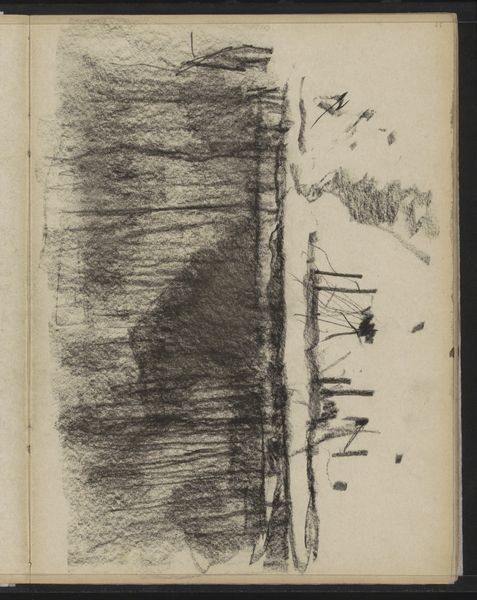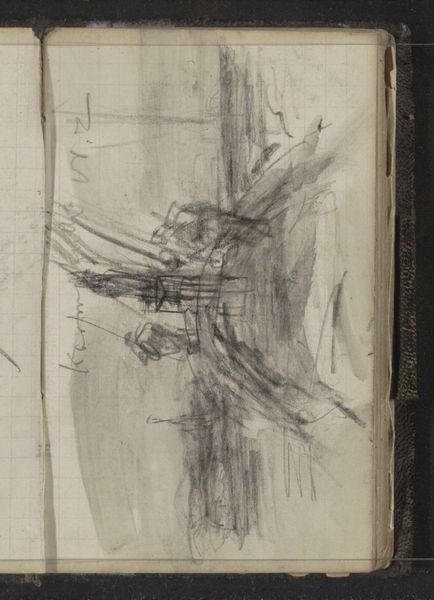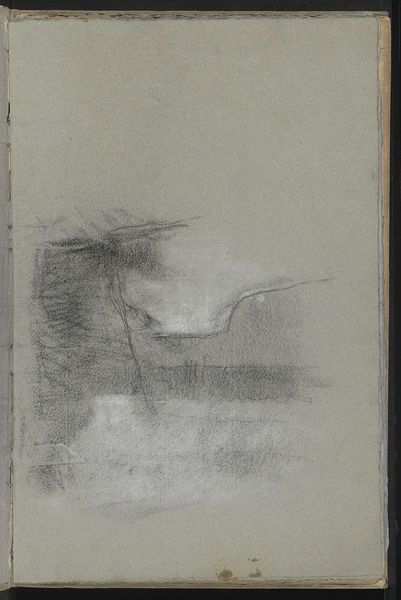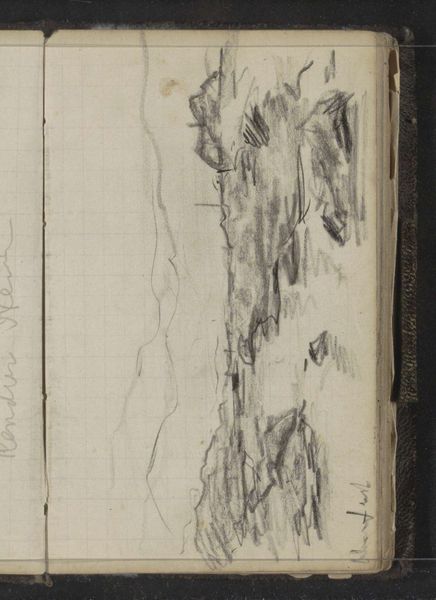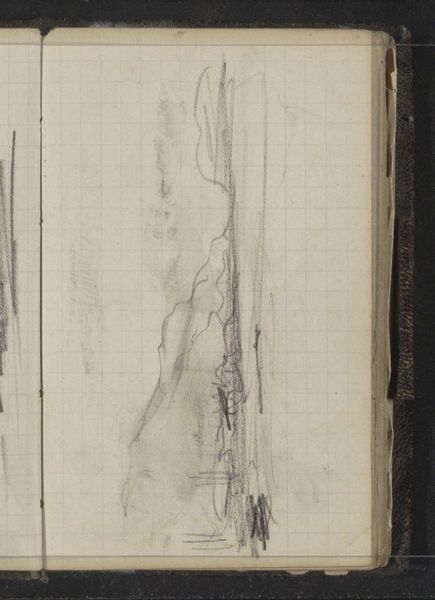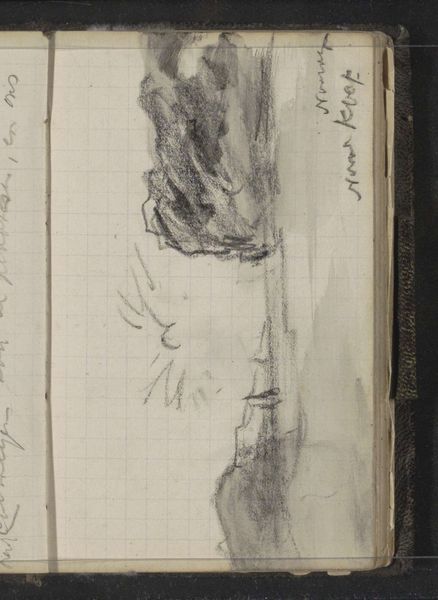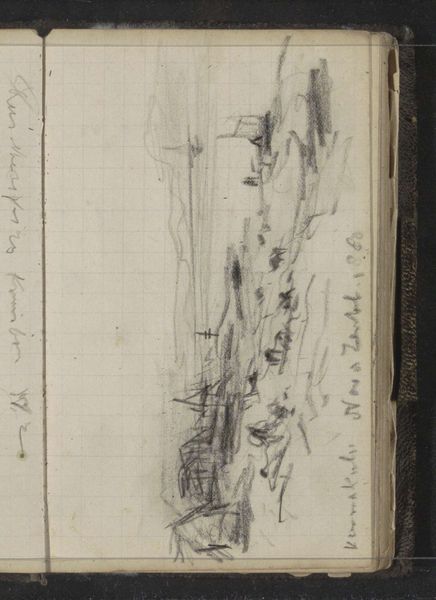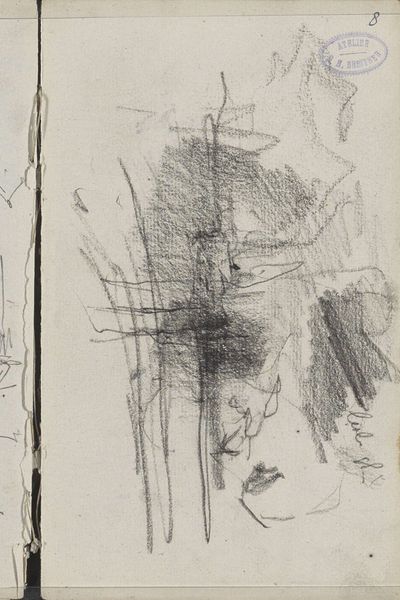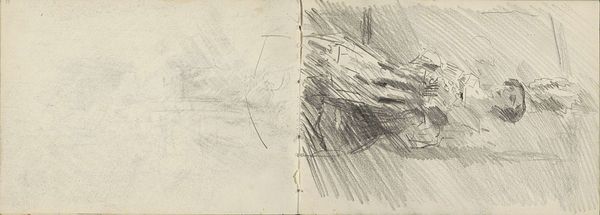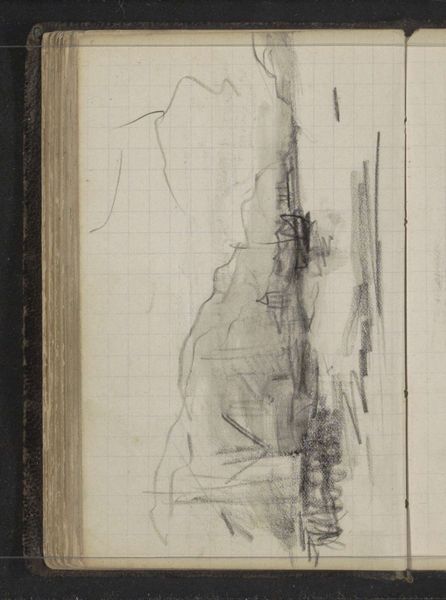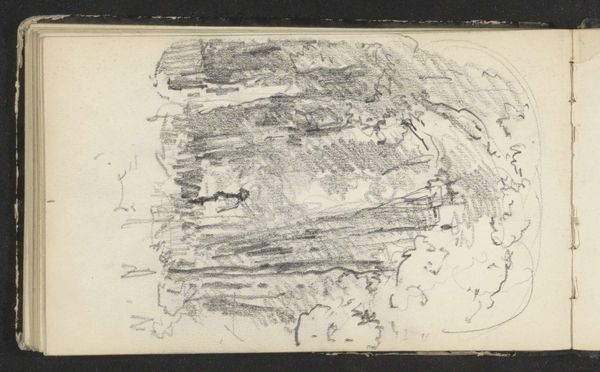
drawing, paper, graphite
#
drawing
#
impressionism
#
landscape
#
paper
#
coloured pencil
#
graphite
#
realism
Copyright: Rijks Museum: Open Domain
Editor: This is "Landscape with a Flight of Birds," a drawing by Louis Apol, likely from between 1880 and 1888. It's graphite and coloured pencil on paper. It’s giving me a really strong sense of the harshness of winter, despite its apparent simplicity. How do you interpret this work? Curator: What strikes me most is its socio-political context. Apol was deeply embedded in representing the Dutch landscape, but through whose eyes? Think about the burgeoning industrial revolution and the increasing urbanisation that pushed artists to seek refuge in, and idealise, the countryside. How complicit was Apol in presenting a sanitised version of rural life, potentially obscuring the struggles of the working class? Editor: That's interesting; I hadn’t considered it in that light. So you're saying his choice of subject matter wasn't just aesthetic? Curator: Precisely. Landscape painting, especially in this period, became a vehicle for expressing national identity and often, a nostalgic yearning for a pre-industrial past. What do those birds represent in the context of rapid social change? Are they freedom, escape, or perhaps even a fragile ecosystem threatened by progress? And consider who had the privilege to enjoy these idealized landscapes. Was it accessible to everyone, or just a select few? Editor: So, we need to question the narratives these images perpetuate? Curator: Absolutely. Art isn't created in a vacuum. By interrogating the social, economic, and political forces at play, we can begin to understand the power dynamics embedded within seemingly idyllic scenes. Editor: This has definitely given me a new perspective on how to approach landscape art. It's not just about beauty; it’s about power, privilege, and whose stories are being told. Curator: Exactly! It encourages a more critical engagement with art history and its relationship to contemporary society.
Comments
No comments
Be the first to comment and join the conversation on the ultimate creative platform.

